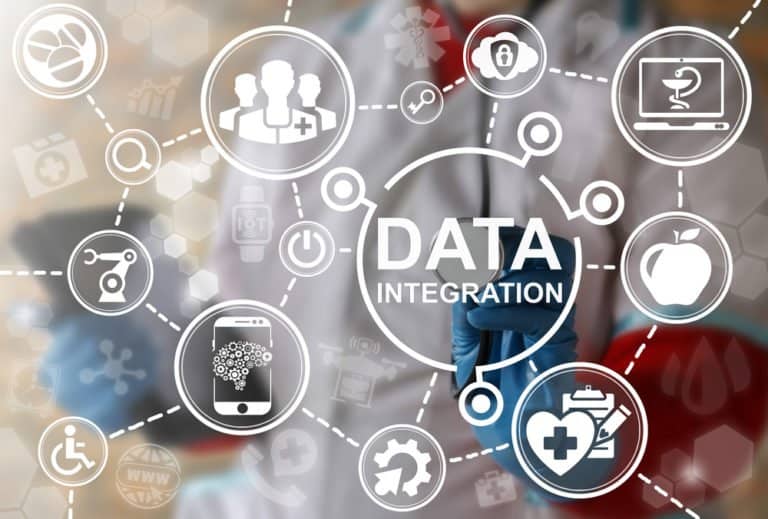More and more companies are turning to low code and no-code. The aim is to develop applications or add features to their current enterprise SaaS solutions more quickly. However, they are increasingly encountering the need to combine data, data from different sources. In order to collect this data properly, it is wise to use an integration partner.
When building an application, whether you do this by programming yourself or by using a low-code or no-code platform, where you want to use data from an external source, you will have to use an API (Application Programming Interface). This data can come from a website, but also from a CRM or ERP system. An API is a way of talking to an application in the background to exchange data. In order to do this properly, the developer or the person who develops the application must read the documentation of an API carefully. This way he or she knows how the API works, how the data is delivered and in which formats. A common example is that the date of a record can be delivered in many ways. This sometimes makes linking to an API a difficult process, especially if the API is in development and there are still some changes in the way it is called or how the data is delivered.
Different integration partners
This is why more and more companies are switching to an integration partner. They no longer talk directly to the API of the application with which they want to communicate, but they will talk to an integration partner. This partner ensures that they know all or at least as many APIs as possible and that they maintain them properly. Just like all online services, this type of integration partner can be found in many different capacities. For example, you have your smaller services like Zapier and Automate.io. These have quite a few APIs, but often only support the most common functions and require the user to check the data formats themselves.
Enterprise integration
There are also integration partners such as Dell Boomi and MuleSoft, who focus more on the enterprise-organizations with more requirements. These partners provide connectors and then support the full API. This makes it possible to extract and reuse all data from a SaaS application. We also see that these companies have already made some progress with the application of automatic actions. For example, the format of a date can be converted automatically, or filters can even be applied to a dataset to achieve better results. These are integration partners that go a little further. In addition, they maintain the APIs of all services to ensure that built connectors continue to work, something that is essential for enterprise organisations.
These partners have also advanced more when it comes to analytics. They can very well map out how many transactions have taken place and what conclusions can be drawn from them.
Ultimately, the greatest added value is that they take over the knowledge of the APIs from the end-user who has to develop an application. The user no longer has to pick out an entire API to make the right connections; the connections can also be made simply by drag-and-drop. Both Dell Boomi and MuleSoft can handle almost all low-code platforms.
MuleSoft
However, MuleSoft was taken over by Salesforce a few years ago. MuleSoft still positions itself as an independent platform that can work with anyone, including Salesforce’s competitors. It is no secret that Salesforce’s low code platform will be highly integrated with MuleSoft, making it even easier to connect to external SaaS solutions. After all, it is useful for companies to choose a single integration partner, which makes it easier to manage applications and integrations.
Integration partners invest in AI and machine learning
This form of data links and integrations is not new; companies have been using so-called APIs for years. Handing over this API management is something of the past few years. That is why there are still quite a few integration partners to be found. We expect a lot of development in this area in the coming years, as these services become larger and the focus on machine learning and the application of artificial intelligence (AI) is given more priority. Ultimately, exchanging data and connecting different applications should be much easier if AI can be applied to them. Especially for use cases that frequently occur, such as reading customer data and deals in Salesforce. The number of actions required for this could be significantly reduced with AI.
Integration between low-code platforms and integration platforms
The integration between low code platforms and the integration platforms could also be improved as far as we are concerned. At the moment, the integration still needs to be configured in the Dell Boomi or MuleSoft environment. If this can be done within the low-code platform, this could lead to a huge gain in application development. We expect to see some steps this year and in the coming year.
